Water In Armed Conflict And Other Situations Of Violence
4 May 2021 BISKEK, Kyrgyzstan
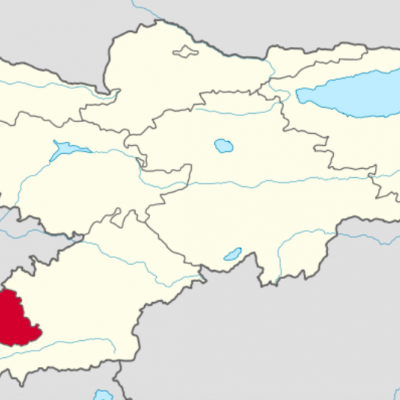
Disputes over water pumping station surveillance equipment quickly escalated into armed skirmish; over 50 dead and 150 injured on 28 April. 1 May Ceasefire. Tensions continue.
22 Apr 2021 KYIV, Ukraine
Current Conflict, Historic Nuclear Blast: The Double Threats To Eastern Ukraine Water Supply
A million people lose fresh water supply as more infrastructuredamaged in conflict. Continuingrisk of radioactive contamination in flooded mine
29 Apr 2021 NEW YORK NY, United States
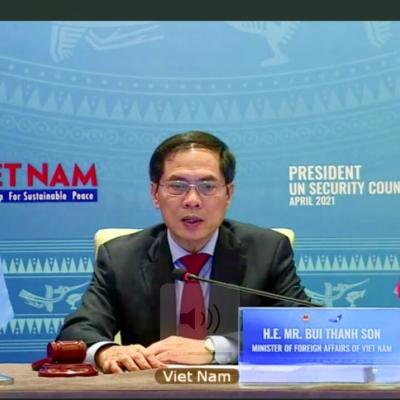
UN Security Council seeks to reinforce existing international humanitarian law on the protection of critical infrastructure in conflict zones amid increases in intentional damage w...
International Water Law And Transboundary Cooperation
30 Apr 2021 KINSHASA, Democratic Republic of Congo
Rhetoric Escalates As GERD Talks Fail To Make Progress
Ethiopia has called for a meeting of the African Union as tripartite talks fail again,plans to recommence reservoir filling in July's rainy season. Egypt and Sudan have insisted up...
23 Apr 2021 VIENTIANE, Laos
Mekong River: Chinese Dam Releases Threaten Downstream Ecosystems, Livelihoods
Unexpected changes in river levels and the clarity of the water have raised concerns about nesting fish and birds. Pattern of "unnatural" fluctuation observed.
16 Apr 2021 TOKYO, Japan
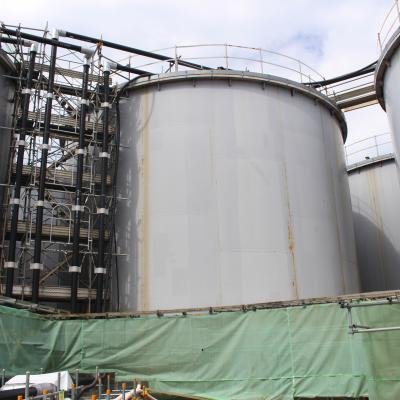
The Fukushima nuclear plant is running out of space to store radioactive water following its destruction in the 2011 earthquake and tsunami. Plans by owners TEPCOto begin dischargi...
19 Apr 2021 WASHINGTON DC, United States
US Supreme Court Decision On Prolonged Interstate Water Dispute
The US State of Georgia's river water use has been held not responsible for reduction in oyster bed volumes; Florida held responsible for inadequate protection of species.
Knowledge-based, Data-driven Decision Making
26 Apr 2021 Washington DC, United States
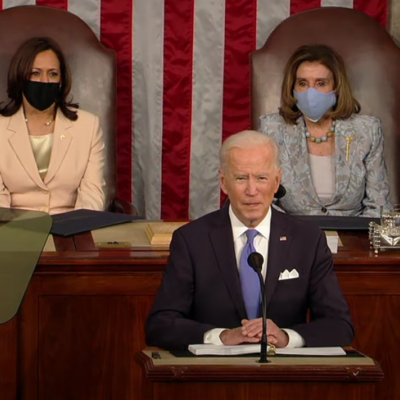
The first 100 days of an American presidency set the tone for an administration as well as its priorities. Joseph Biden has linked his climate agenda to job creation at home and to...
28 Apr 2021 Glasgow, United Kingdom

UK Prime Minister Boris Johnson urges more ambition in NDCs ahead of Glasgow conference. Event is widely anticipated by global water community. Greta Thunberg does not plan to atte...
17 Apr 2021 JARARTA, Indonesia
Cyclone Seroja Kills Hundreds In Indonesia
Flash floods and landslides in East Timor force mass evacuations and destroy COVID PPE storage facility.
16 Apr 2021 Chennai, India
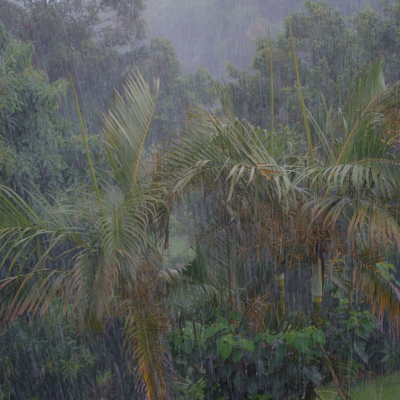
New research predictsthat Indian monsoons will become stronger and more chaotic without collective climate action from policy makers across the globe.Scientists warnthat increased ...
10 Feb 2021 SINGAPORE, Singapore
New Singapore Desal Plant Can Treat Sea Water And Reservoir Water
Singapore has opened its fourth desalination plant in an effort to enhance water security measures across the country as daily water consumption rates reach 430 million gallons per...
20 Apr 2021 BALTIMORE MD,United States
How Road Salts Contaminate Freshwater Resources, Threaten Human Health
Environmental risks associated with using salts on our roads is just as significant as other major issues such as acid rain and lead, and requires the same level of regulation from...
People's Diplomacy And Intersectoral Water Management
29 Apr 2021 Edinburgh, United Kingdom
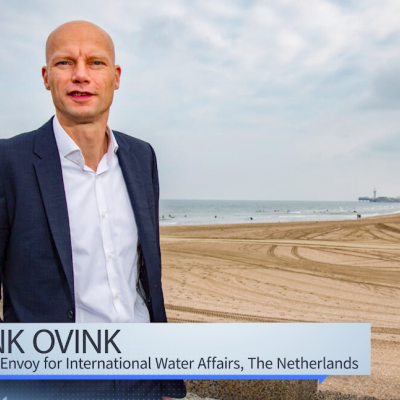
Henk Ovink, Special Envoy for International Water Affairs of the Netherlands talks to us about his work, the Netherlands' unique approach to valuing water and the need for global c...
7 Apr 2021 EDINBURGH, United Kingdom
ICT Supply Chain Faces High Flooding Risk
Key river basins that are particularly vulnerable include Taihu, Dong and Zhu in China; Danube and Rhine in Europe; Colorado and Upper Mississippi in the United States.
16 Apr 2021 GENEVA, Switzerland
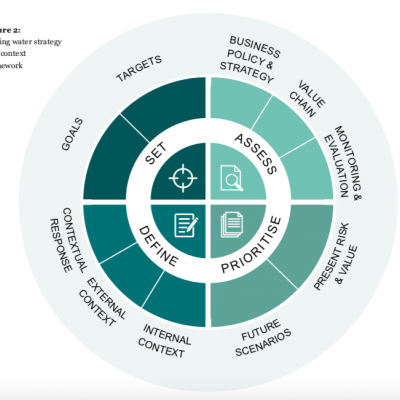
New guides from WWF and H and M Group offer a practical guide to understand the strategic importance of water in corporate value chains to create meaningful targets and goals that ...
21 Apr 2021 WASHINGTON DC, United States
United States: Thousands Of Lives Could Have Been Saved By Nationwide Suspension Of Water Cutoffs During COVID Crisis
A nationwide moratorium on water shut-offs during COVID crisis would have saved lives and prevented infections. Minorities disproportionately effected. Calls for Biden admini...
30 Apr 2021 OTTOWA, Canada
Canadian Trade Union Urges Pension Investor To Withdraw From Brazilian Water Deal
Canada Pension Plan Investments comes under fire for its participation in privatisation of Brazilian public water utility. Trade union CUPE calls out "outrageous" use of "workers' ...
9 Feb 2021 BRASILIA, Brazil
Brumadinho Mine Disaster: Vale Agrees $7 Billion USD Reparation Settlement
Mining company Vale SA has reached agreement with the government of Minas Gerais in Brazil to pay $7 Billion USD to compensate the state for socioeconomic and environmental damage ...
Finance For Water Cooperation
23 Apr 2021 WASHINGTON DC, United States
Multimilion MCC Water Investment For Mongolia Capital
Clock starts on implementation of Mongolia Water Compact. Five-year construction schedule for advanced water purification plant, wastewater recycling and construction of additional...
22 Apr 2021 Mogadishu
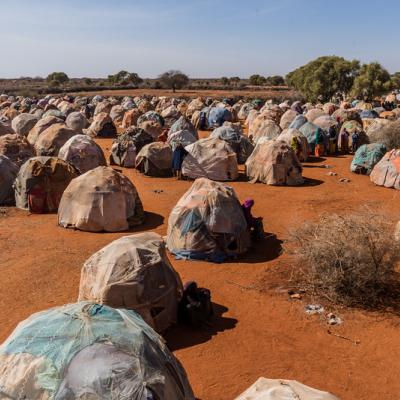
Somalia teeters on the brink of another humanitarian disaster as the country continues to struggle with drought, devastating locusts and the effects of COVID-19. "If the rains d...
22 Apr 2021 CHANDIGARH, India
World Bank And Asian Infrastructure Investment Bank Support Punjab Drinking Water
Tube wells will be replaced with treated surface water, offeringcontinuous supply of potable water to growing cities of Amritsar and Ludhiana.
19 Apr 2021 Lilongwe
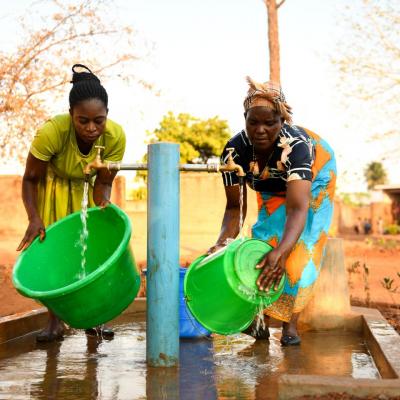
Projects in Balaka and Machinga districts, scheduled to commence in March 22 for completion by August 2023, will help to relieve "pathetic" situation. Soft loan to be repaid over 2...
New Mechanisms For Hydrodiplomacy
17 Apr 2021 ALOR SETAR, Malaysia
Malaysian States In Water Stand-off
Interstate squabbling escalates in competition for water resources. NGO coalition pleas for mediation and unity to protect forest from land clearing and logging.
Water In Armed Conflict And Other Situations Of Violence

Deadly Water-related Skirmishes At Kyrgyz / Tajik Border
Kyrgyzstan and Tajikistan agreed, 1 May, a “complete ceasefire” to quell clashes that broke out 28 April along the border in Batken Province (Kyrgyzstan, in red on map) between the two countries.
What started out as a rock-throwing incident between villagers from opposing sides quickly escalated with border guards escalating the dispute with machine guns, mortars, and Mi-24 military helicopters, according to Kyrgyzstan’s minister of health [International news.az].
Over 50 people on both sides of the border died and over 150 are reported to have been injured. It has been reported [Al Jazeera] that at on the Kyrgyz side, at least one border post and several houses were destroyed; the Tajiks reported damage to a bridge.
The recent incident arose over the “ownership” of the reservoir and pumping station at the Isfara River and the installation of surveillance equipment that has since been removed.
The Kyrgz / Tajik border is 600 miles long and much of it has been disputed since the collapse of the Soviet regime and the creation of a hard, sometimes seemingly arbitrary border between the two countries. The border is meandering and both sides claim the territory where the most recent fighting has occurred. There are multiple and large ethnic enclaves on either side of the border and access restrictions have contributed to the tension along the border.
Restrictions on access to land and water resources in the fertile Fergana Valley have led to deadly clashes among the three countries adjacent to the valley (Kyrgyzstan, Takjistan, and Uzbekistan) but this most recent incident is considered to be the heaviest in years and has raised concerns of the possibility of a wider conflict.
Russia’s Foreign Minister, Sergei Lavrov, has urged the two countries to uphold the ceasefire agreement. Both Kyrgyzstan and Tajikistan consider Russia a strategic ally and both host Russian military bases.
As reported in Tass, Russian experts on Central Asia assert that the border issue has been neglected and frequent changes in governments (particularly Kyrgyzstan) have disrupted consistent efforts to resolve the issues. Despite “official” willingness, nationalist factions have developed and local communities and reportedly criminal groups have other ideas about how to resolve the disputes.
"On the whole, neither Kyrgyzstan nor Tajikistan is ready to address the border issues. Border regions in both countries are socially and economically depressed. The Fergana Valley lacks agricultural resources - land and especially water. This is why land and water have become the main cause of all conflicts," the expert noted.
Current Conflict, Historic Nuclear Blast: The Double Threats To Eastern Ukraine Water Supply
More than one million people in the Donbas region of eastern Ukraine were yet again left without water in early April amid continued conflict, according to UN spokesperson Stephane Dujarric.
Water infrastructure in the region has been damaged repeatedly during the seven-year conflict, with much of the population relying on support from aid agencies for basic water and sanitation needs.
According to media reports, the damage to the pumping station has since been repaired.
It comes as Ukraine highlights a serious risk of radioactive contamination to the water supply in the region due to flooding of the mothballed Yunkom mine, where the Soviet Union set off a nuclear explosion in 1979 at a depth of 915 metres.
Intended to release toxic subterranean gases, the mission failed and the mine was “dry mothballed” i.e. sealed off, but with pumps ensuring water did not flood the cavities. However, in 2019, the Russian proxy forces occupying Donbas decided to turn off the pumps due to “prohibitive costs”, stating that scientific studies had concluded that flooding the mine did not pose an environmental risk.
However, it is understood that no independent risk assessment has been conducted and various experts have repeatedly expressed concerns.
Speaking on Ukrainian state television broadcast in the Donbas region, Dom TV, Ukraine’s minister of environment protection and natural resources, Roman Abramovsky, warned of a potential ecological catastrophe if contaminated water leaks out of the mine into other hydraulically connected mines and groundwater.
Although ongoing monitoring in the region is not currently showing any abnormalities, a more detailed investigation is necessary, said Abramovsky, adding that the occupying forces are not permitting access to the mine.
According to a local media report, Ukraine has appealed to the International Atomic Energy Agency (IAEA) to assess the situation.
A remote study conducted last year by the Conflict and Environment Observatory (CEOBS) using satellite imagery and spectral analysis found heavy metal contamination in a pond, the most likely source of which is the flooded Red October mine, which is around 4 km from the Yunkom mine and hydraulically connected to it.
The CEOBS study expresses its concern that “The flooding at Red October may indicate an increased probability of mobilising radionuclides from the nearby Yunkom mine. Whilst this probability may well remain small, given the scale of the risk, it is time for local and regional actors to come together to properly characterise this hazard with the necessary resources.”

UN Security Council Votes To Protect Essential Civilian Infrastructure
All 15 members of the UN Security Council have voted in favour of a resolution aimed at stopping the escalating use of critical civilian infrastructure as a weapon of war, including those relating to water supply. The vote followed an open debate on 27 April on the "protection of civilians in armed conflict: indispensable civilian objects".
The resolution records "deep concern that ongoing armed conflicts have devastating impacts on civilians and civilian objects ... resulting in reduced access to essential services such as healthcare, water, sanitation, energy, posing devastating consequences for the civilian population, and hindering an effective humanitarian response".
"Cutting off safe water supply during conflict causes sanitation and health crises. Even one incident that disrupts the water supply can have enormous consequences for health," said Mark Lowcock, the UN's under-secretary-general for humanitarian affairs and emergency relief coordinator in his remarks to the council.
In setting out the case in favour of the resolution, he identified water as the second of four critical areas impacted by emerging trends in terrorism and state-sponsored conflict. His examples included cases of deliberate attacks on water supply in Syria, Yemen, Ukraine, Libya and South Sudan.
Peter Maurer, president of the International Committee of the Red Cross (ICRC) also addressed the council, saying: "In protracted conflicts, children under five years old are 20 times more likely to die from diseases linked to unsafe water and sanitation than from violence," adding, "We are present during the long years of war when political solutions are absent, because allowing critical infrastructure to fail is simply not an option. Substituting local authorities for decades with water trucking or providing medical equipment to clinics in remote basements is not an option."
Maurer made five pleas to the council, one of which was for measures to safeguard healthcare and interconnected services such as water, sanitation and electricity. Another was for the adoption of an "avoidance policy" in the use of heavy explosive weapons in populated areas. As well as addressing the obvious direct risk of civilian death or injury, Maurer pointed to the associated damage to critical infrastructure - a concern echoed by Lowcock: "A study last year in Yemen showed how the use of heavy explosive weapons in populated areas has disrupted every resource and system in the country, including water and power supplies, hospitals and sanitation systems," he said.
The resolution was sponsored by Vietnam, which holds the presidency of the council for the month of April. Vietnam foreign minister Bui Thanh Son (pictured) said: "We often measure the consequence of conflicts in numbers of direct victims of violence, but indirect and longer-term impacts of widespread damage to the basic infrastructure are equally destructive."
While international humanitarian law does not contain any specific regulations on water protection, it already contains several rules relating to it, including the safeguarding of critical civilian infrastructure. The resolution passed by the security council reiterates the call to all parties to comply with their obligations under that law.
Photo credit: UN Photo/Eskinder Debebe
International Water Law And Transboundary Cooperation
Rhetoric Escalates As GERD Talks Fail To Make Progress
Egyptian president Abdel Fattah al-Sisi has warned Ethiopia not to “touch a drop of Egypt’s water, because all options are open,” following earlier comments that the Grand Ethiopian Renaissance Dam (GERD) project could lead to “unimaginable instability” in the region.
The statement came after the latest round of GERD talks, hosted in Kinshasa by President Felix Tshisekedi of the Democratic Republic of Congo, ended in early April without progress. Subsequently, Ethiopia has proposed a meeting of the African Union Assembly to bring an end to the deadlock.
The tripartite talks involving Ethiopia, Egypt and Sudan have reached a new level of urgency as Ethiopia prepares to commence the second stage of filling the 6 GW dam on the Blue Nile when the rainy season commences in July. Egypt and Sudan had insisted upon reaching agreement on water flows prior to any further filling.
Sudan’s irrigation minister Yasser Abbas also warned that the dam affects Sudanese national security, echoing al-Sisi’s words that “all options are open”, including the involvement of the UN Security Council. Sudan’s foreign minister Mariam al-Sadig al-Mahadi told reporters that Ethiopia was directly threatening the people of the Nile basin and Sudan, saying: “Without a new approach to negotiations, there becomes space for Ethiopia to impose a fait accompli and put all the peoples of the region in grave danger.”
While insisting it will not enter into an agreement that infringes upon its rights to use the Nile, Ethiopia has sought to tone down the rhetoric. After the talks, Ethiopian water minister Seleshi Bekele told a press conference: “This kind of thinking is unnecessary, and exaggerating this kind of thing doesn't benefit any country." However, he reiterated Ethiopia’s commitment to continue filling the dam despite the objections from Egypt and Sudan, saying: “As construction progresses, filling takes place … We don’t deviate from that at all.”
One of the major sticking points in the discussions is understood to be the desire by Egypt and Sudan to include mediation by the US, the EU and South Africa in addition to the African Union (AU). Ethiopia has previously objected to this.
Egypt and Sudan are accusing Ethiopia of political intransigence. For Ethiopia, however, the GERD is crucial to its economic development plans and Addis Ababa is eager for it to finally begin generating much-needed electricity following a construction programme that has lasted 10 years to date. Ethiopia has previously accused the US of favouring Cairo.
The reservoir has a total capacity of 74 billion cubic metres. Ethiopia argues that the gradual filling of the dam is an important part of the ongoing construction and commissioning process. 4.9 billion cubic metres were added during the first filling last year. The goal for this year’s filling is 13.5 billion cubic metres.
Egypt is dependent upon the Nile for around 97 percent of its drinking and irrigation water, while Sudan is concerned that GERD could have a negative impact on its own downstream dams. A total of 250 million people living in the three countries stand to be affected by the dam.
Mekong River: Chinese Dam Releases Threaten Downstream Ecosystems, Livelihoods
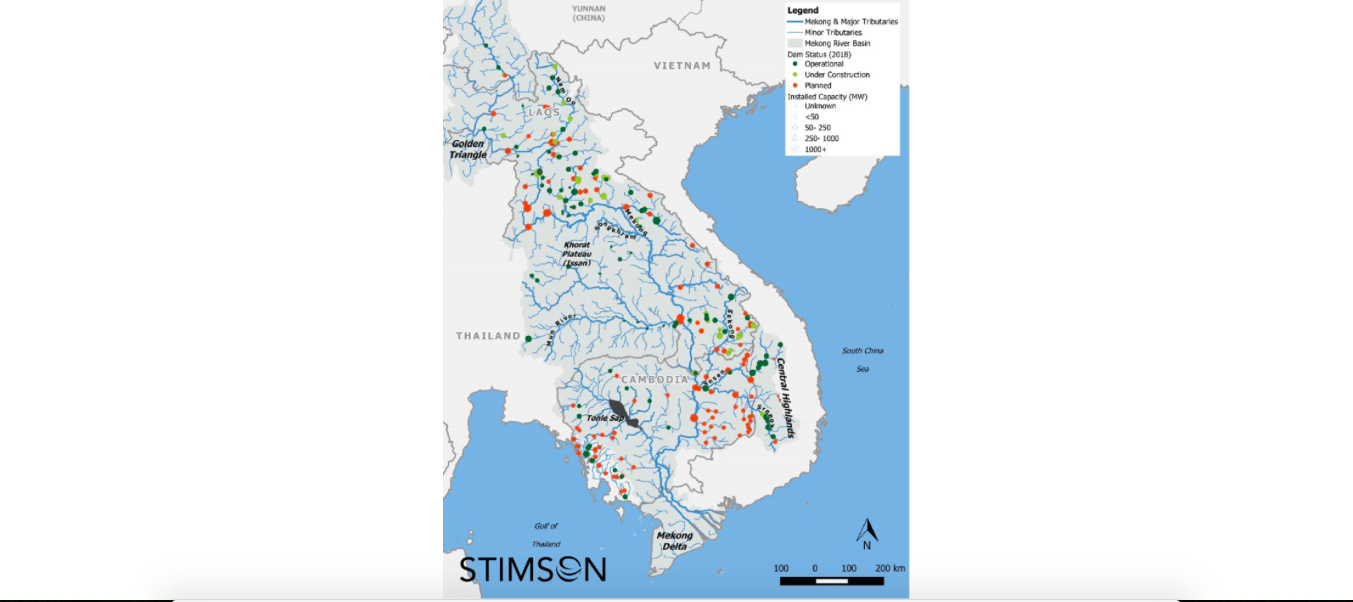
Parts of the Mekong River in Laos have risen suddenly during the dry season by as much as 12 cm in one day, threatening fish stocks, wildlife and aquatic plants vital to livelihoods.
Despite an apparent lack of formal notification, the authorities in Laos suspect the cause is a release of water from the controversial cascades of dams in China. Data from the Stimson Center’s Mekong Dam Monitor indicate that five Chinese dams released water between 29 March and 4 April.
Speaking to local media, Nowat Roykaew, president of the Chiang Khong Conservation Group in Thailand, noted that the rising water is clear – an indication that it is coming from Chinese dams, “because if it came from rain, it would be turbid,” he said, adding “The water fluctuation has broken down the whole ecosystem.”
People dependent upon the river for their livelihoods are alarmed by the sudden change, raising concerns about fish stocks as the higher flows wash away recently laid eggs, while birds along the riverside face the same risk if nesting areas are flooded. The clearer waters also provide fewer nutrients to support the ecosystem.
The latest rise is part of a long-running pattern of unnatural fluctuations. In January, river levels had reached “worrying” lows due to restricted output from the Jinghong dam due to the maintenance of power transmission lines.
It comes as the Mekong River Commission (MRC) released a new ten-year basin development strategy (BDS) and a five-year strategic plan to enable Mekong countries to address emerging challenges and improve the overall state of the basin.
A statement issued by the MRC said: “The new BDS is based on recent assessments of the significant impacts caused by water and related resources developments and infrastructure, including dams, that have changed flow regimes, affecting sediment transport and magnifying bank erosion. These impacts have in turn led to a decline in natural fish populations, the degradation of environmental assets and floodplains, and the reduction in replenishment of the Mekong Delta. Climate change has further added to the severity of the impacts, bringing more uncertainties and risks, including frequent droughts and floods.”
Last year, China agreed to share year-round water level and rainfall data with the MRC and pledged to notify the MRC and its Member Countries of any abnormal rise or fall in water levels or discharge, and provide relevant information on factors that might lead to sudden flooding.
The 12th longest in the world, the Mekong River runs through China, Myanmar, Laos, Thailand, Cambodia and Vietnam. Heavily dammed in China, changes to its flow have had a noticeable impact on the river’s ecology and on the downstream communities dependent upon it for food, fresh water and livelihoods.

Plan To Release Water From Fukushima Sparks Outrage
The Japanese government has announced plans to start releasing "treated" radioactive water stored at the destroyed Fukushima nuclear plant into the Pacific Ocean. The 1.37-million-ton storage facilities there will reach capacity towards the end of 2022, and the plant's operator, Tokyo Electric Power Co (TEPCO), says it has no choice but to commence release within the next two years.
Representatives of the fisheries, scientific and environmental communities object to the plans, citing concerns about the impact on fish stocks, the local ecology and the wider environment. Media reports quote the chairman of the Japanese Fisheries Cooperative, Hiroshi Kishi, as calling the decision "absolutely unacceptable" and that it "trampled on" all Japanese fisheries operators.
Meanwhile, neighbouring nations China and South Korea have issued statements calling the plan "absolutely unacceptable" and "extremely irresponsible". South Korea subsequently summoned Tokyo's ambassador to Seoul to express its concerns, and is investigating avenues for referring Japan's decision to the International Tribunal for the Law of the Sea.
The International Atomic Energy Agency (IAEA), on the other hand, has said that it is ready to support Japan on its water disposal plans. In a statement, director general of the IAEA Mariano Grossi welcomed the announcement that a decision had been made and said the IAEA stands ready to provide technical support in monitoring and reviewing the plan's safe and transparent implementation.
"The Japanese Government’s decision is in line with practice globally, even though the large amount of water at the Fukushima plant makes it a unique and complex case,” said Grossi, Adding: "Our cooperation and our presence will help build confidence – in Japan and beyond – that the water disposal is carried out without an adverse impact on human health and the environment."
Likewise, the US Department of State has issued a carefully worded statement, saying: "In this unique and challenging situation, Japan has weighed the options and effects, has been transparent about its decision, and appears to have adopted an approach in accordance with globally accepted nuclear safety standards. We look forward to the GOJ’s continued coordination and communication as it monitors the effectiveness of this approach."
Following the announcement by the Japanese government on 13 April, TEPCO held a press conference on 16 April at which it detailed the Advanced Liquid Processing System (ALPS) it is employing to treat the water. The documents released include assurances that environmental monitoring of the discharge process will include third-party measurements and an invitation to agricultural, forestry, and fishery producers and local government officials to participate in and observe their efforts.
Towards the end of the two-year process for approving the implementation plan, TEPCO proposes to commence "carefully discharging small amounts" then to continue monitoring the sea for an undefined period subject to review by the IAEA.
In an attempt to allay domestic and international concerns TEPCO undertook to "continuously provide accurate information in a highly transparent manner, regarding the impacts on the environment such as the results of measurements/analysis on the concentration of radioactive materials in the ALPS treated water before discharge".
Photo credit: TEPCO
US Supreme Court Decision On Prolonged Interstate Water Dispute
The US Supreme Court has reached a final ruling on the long-running legal battle regarding interstate water distribution between Georgia and Florida, ending a three-decade-long dispute between the two states.
On 1 April 2021, The Supreme Court rejected Florida’s request for a decree to reduce the amount of water Georgia could use from the Apalachicola-Chattahoochee-Flint (ACF) river system.
The Sunshine State’s case that Georgia’s overconsumption was to blame for the break down of the oyster population in the Apalachicola Bay was dismissed by the court due to a lack of ‘clear and convincing evidence’.
Justice Amy Coney Barrett said that it was ‘highly probable’ that Florida’s mismanagement of fisheries was to blame for the 2012 oyster collapse.
She wrote for the court: “The record also shows that Florida failed to adequately re-shell its oyster bars. Reshelling is a century-old oyster- management practice that involves replacing harvested oyster shells with clean shells, which can serve as habitat for young oysters".
“Yet in the years before the collapse, while Florida was harvesting oysters at a record pace, it was simultaneously re- shelling its oyster bars at a historically low rate".
In December 2020, the Florida Fish and Wildlife Conservation Commission voted to shut down oyster harvesting in the Apalachicola Bay for the next 4 years in attempt to preserve the oyster population in the Bay.
Despite referencing Florida’s poor fishery management, Justice Barrett made it clear that the cause of the 2012 oyster collapse continues to “remain a subject of ongoing scientific debate” and that she and her colleagues are not qualified to settle that debate.
In closing, the Court cautioned that despite their legal victory, Georgia has a responsibility to make ‘reasonable use’ of the interstate waters in order to prevent water scarcity in the basin.
Knowledge-based, Data-driven Decision Making

Biden's First 100 Days Of Water
Hours after his inauguration, US president Joe Biden signed an executive order for the US to rejoin the Paris climate agreement. Seven days later, he signed a further slew of orders under a shared banner of “tackling climate change, creating jobs and restoring scientific integrity”, with water featuring high on the agenda.
He said: “Today is ‘Climate Day’ at the White House - which means that today is ‘Jobs Day’ at the White House. We’re talking about American innovation, American products, American labour. And we’re talking about the health of our families and cleaner water, cleaner air, and cleaner communities.”
Biden went on to lay out his vision for putting “millions of Americans to work modernising our water systems”, promising to “properly manage lands and waterways in ways that allow us to protect, preserve them”.
Describing so-called “fenceline communities”, largely those home to people of colour and whites living in poverty, he said: “We’re going to work to make sure that they receive 40 percent of the benefits of key federal investments in clean energy, clean water, and wastewater infrastructure.”
99 days after taking the oath of office, he addressed the joint chambers of congress and reiterated his focus on tackling climate change and upgrading the nation's water infrastructure through a lens of American job creation with his flagship American Jobs Plan.
A president’s first 100 days in office is traditionally a milestone for the administration’s agenda. It is during the honeymoon period at the start of a presidency when it is likely to have more momentum and to get bills passed by Congress.
During his address to Congress, Biden laid out his key policies and made multiple pleas for a constructive approach in a bid to free the legislative part of the American government from partisan gridlock, arguing: "We can’t be so busy competing with each other that we forget the competition is with the rest of the world to win the 21st Century".
The Domestic Water Agenda
By mid-March, the administration was starting to make firm financial commitments to water initiatives. On 22 March, World Water Day, the Department of Energy (DOE) announced it had awarded $27.5 Million USD to 16 projects working across 13 states to decarbonise US water infrastructure.
Singling out wastewater treatment, in particular, which accounts for up to two percent of domestic US energy consumption, secretary of energy Jennifer M. Granholm said: “By modernising our water infrastructure, we can reduce electricity demand and turn water utilities into clean energy producers. The next-generation innovations DOE is investing in will also lower costs while increasing access to clean water for Americans, and drive us toward a cleaner, healthier, more prosperous future.”
It was at the end of March that Biden unveiled his American Jobs Plan, which includes $111 Billion USD of investment in the nation’s crumbling water infrastructure as well as a range of other proposals to clean up and restore polluted land and waterways, improve resilience to climate-related disasters such as flooding, and protect and restore nature-based infrastructure such as wetlands and watersheds.
The drinking water plans incorporate a $45 Billion USD investment to replace 100 percent of the nation’s lead pipes and service lines.
The plan proposes a further $56 Billion USD in grants and low-cost flexible loans to states, Tribes, territories and disadvantaged communities to “Upgrade and modernize America’s drinking water, wastewater, and stormwater systems, tackle new contaminants, and support clean water infrastructure across rural America”.
An additional $10 Billion USD is earmarked for “monitoring and remediating PFAS (per- and polyfluoroalkyl substances) in drinking water and to invest in rural small water systems and household well and wastewater systems, including drainage fields”.
Other aspects of the plan with wide-ranging implications for water include proposals to plug orphan oil and gas wells and clean up abandoned mines. “Hundreds of thousands” such wells and mines, many located in rural communities, “pose serious safety hazards, while also causing ongoing air, water and other environmental damage”.
Citing 22 separate billion-dollar weather and climate disasters in the US in 2020 that cost $95 Billion USD in damages, the plan calls for $50 Billion USD in dedicated investments to improve infrastructure resilience in the face of increasingly severe floods and other risks caused by climate change.
It also seeks to protect and restore “major land and water resources like Florida’s Everglades and the Great Lakes” and alleviate “the western drought crisis by investing in water efficiency and recycling programs”.
The plan, which will have to be approved by Congress in a series of bills, has been described in the financial media as “far-reaching” and “ambitious” and widely welcomed in the water community. However, if and in what form they make it through congress will depend upon Washington small print and trade-offs that have seen grand infrastructure plans founder in the past.
However, some aspects are already being rolled out under existing legislation such as the Water Infrastructure Finance and Innovation Act (WIFIA). In mid-April the EPA announced $300 Million USD in loans for water infrastructure upgrades in Washington DC, Louisville (Kentucky) and the Florida Keys.
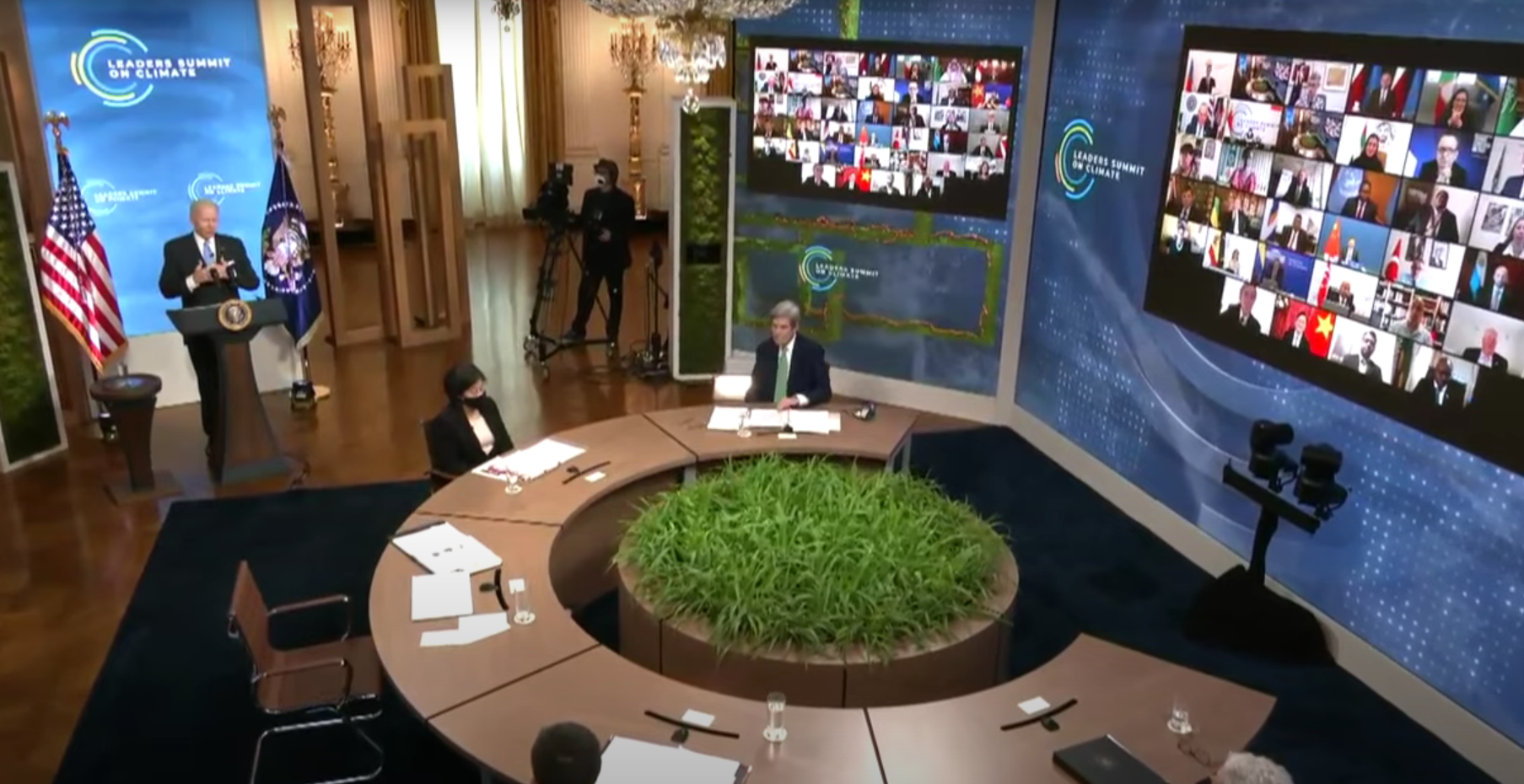
The International Implications
Then, on Earth Day, 22 April, Biden took his climate offensive back to the international stage when he hosted his promised Leaders Summit on Climate. Inviting a roster of nearly 40 world leaders to declare more ambitious climate goals ahead of COP26 in Glasgow, Scotland, in November, Biden’s top-line announcement was a commitment by the US to target reducing emissions of greenhouse gases by 50-52 percent by 2030 compared to 2005 levels.
He tied this commitment with his American Jobs Plan, stating that creating jobs and tackling climate change go hand in hand, “empowering the US to build more resilient infrastructure, expand access to clean air and drinking water, spur American technological innovations, and create good-paying, union jobs along the way”.
While there was little in the Leaders Summit that focused on specific areas of water policy, one notable moment came from Biden’s director of national intelligence, Avril Haines. In the discussion on climate security hosted by defense secretary Lloyd Austin, she laid out her reasoning for viewing climate change as an “urgent national security policy”. Admitting “we have not always made it a key priority”, she said: “It must be at the centre of our country’s foreign policy and national security and as such, it needs to be fully integrated into every aspect of our analysis, in order to allow us to not only monitor the threat but also, critically, to ensure that policymakers understand the implications of climate change on seemingly unrelated policies and in identifying opportunities to mitigate the challenge we face".
She referenced the findings of the intelligence community’s latest Global Trends report, which identifies “Environment” as one of six “Structural forces”. Reiterating the report's key environment takeaways, Haines said: “We also note that the impact will not be evenly distributed -- disproportionately falling on poor and vulnerable populations, intersecting with environmental degradation to create new vulnerabilities and exacerbating existing risks to economic prosperity, political stability, military readiness, food, water, health, and energy security".
Another recently published report, the Annual Threat Assessment of the US Intelligence Community, warns: “The degradation and depletion of soil, water, and biodiversity resources almost certainly will threaten infrastructure, health, water, food, and security, especially in many developing countries that lack the capacity to adapt quickly to change, and increase the potential for conflict over competition for scarce natural resources".
In a press briefing at the end of the first day of the Leaders Summit, US climate envoy John Kerry faced questions about Republican resistance to the administration’s pledges. In response, he said that “a lot of the plan is executable through executive order,” continuing, “But that’s the power of having the private sector here. That is the real reason why I’m saying to you that no politician in the future is going to undo this because, all over the world, trillions of dollars, trillions of yen, trillions of euros are going to be heading into this new marketplace".
He was referring to the launch the day before of the Glasgow Financial Alliance for Net Zero (GFANZ) and the UN-convened Net-Zero Banking Alliance (NZBA), comprising 43 major banks, as one of the founding members of GFANZ.
What Kerry seemed to imply is that the Biden administration is seeking to bypass congress to speed through large parts of its climate plan and is depending upon the momentum of the markets to prevent a lot of this work from potentially being undone again by a future administration.
Biden's first 100 days in office have served up wide-ranging implications for the water sector at home and abroad. And while some aspects of his climate policy may be actionable by executive order, much of his domestic investment in water infrastructure will require congressional approval. As his bridge-building efforts with Congress are likely to focus on those areas that are least contentious, water may stand to benefit.

Uncertainty Continues Over Timing and Format of COP26 In Scotland
"We were the first country to pass legislation for net zero, we have the biggest offshore wind capacity of any country in the world ... we're half way to net zero, we have carbon emissions lower than at any point since the 19th century, we're ending support for fossil fuels overseas and doubling our international climate finance. We're legislating to delivery 78 Percent of the reductions needed to reach that goal by 2035. And, as host of COP26, we want to see similar ambitions around the world."
Against the backdrop of the COP26 swirling earth logo, UK prime minister Boris Johnson delivered this rallying call in his address to the Leaders Summit on Climate hosted virtually by US president Joe Biden on 22-23 April.
It came amid continued uncertainty on what form COP26 in Glasgow, Scotland, would ultimately take or indeed whether it would be postponed for a second time as countries around the world continue to struggle with the coronavirus pandemic.
Doubts began to emerge at the end of March, as organisers considered alternatives to a fully face-to-face event, which, in normal times, would be expected to attract around 30,000 international visitors to the city of Glasgow. Concerned by the risk of the COP turning into a coronavirus super-spreader event, the UN as well as the UK and Scottish governments are looking at partially virtual "hybrid" options rather than postponement.
However, climate activist Greta Thunberg has stated that she does not plan to attend in November and that the event should be postponed until vaccination has been rolled out further, enabling everyone to "take part on the same terms".
In a report released by the UK parliament's Foreign Affairs Committee, British MPs accused the government of not setting out enough detail on what it wants to achieve during COP26. Entitled "A climate for ambition: Diplomatic preparations for COP26", the report warned: "If COP26 fails it may become impossible to limit the average rise in temperatures to below 2°C, let alone to 1.5°C," continuing: "With only six months until the conference is due to take place, the Government have yet to outline any plans for what may happen if numbers of attendees are limited".
The committee was also critical of the UK government's decision to cut overseas aid from 0.7 to 0.5 percent of GDP. Expressing concerns that it damaged the UK's credibility as a leader in climate finance, the report read: "Contributors told us that these aid cuts may undermine the UK’s ability to ask other countries to step up, as well as damaging the trust that climate-vulnerable countries have in the UK’s COP26 Presidency".
Calling for a rethink of "the traditional diplomatic jamboree", committee chair Tom Tugendhat MP said: “The lessons of the pandemic offer a way of turning away from airmiles and onto airwaves, especially when discussing the climate emergency. Alongside the networked diplomacy this committee has called for in the past, Britain has a chance to embed partners into the hosting of regional events and connect them all through technology, making this a truly global, truly green event."
Speaking to the BBC about the idea of a hybrid COP, Helen Mountford from the World Resources Institute said: "There will be the key elements that have to be in-person and then a lot else that would be virtual, and I think there's that's probably the most likely scenario from my perspective."
However, there is also concern that such an approach would mean missed opportunities for deal-making.
"Can you cover all the ground that needs to be covered in a virtual meeting, given the fact that generally the process relies very heavily on bilateral meetings and backroom deals?" queries Yvo de Boer, who ran the UN talks at the Copenhagen summit in 2009. "My overall sense is that delay is better than messing it up, overplaying your hand and having a failed meeting".
Several other important meetings and summits are lined up between now and November that could have a major impact on what is ultimately achieved at COP26. In addition to Joe Biden's Leader Summit, there is also an "inter-sessional meeting" scheduled for June in Bonn, and the idea has even been floated of holding an additional in-person meeting prior to Glasgow, although no location has been mentioned publicly.
Nevertheless, the massive organisational logistics involved in COP26 mean that pressure is mounting for a definitive decision.
Meanwhile, the COP15 UN Convention on Biological Diversity in Kunming, China, which was rescheduled from 2020 to 11-24 October 2021, has already been planned as a mix of in-person and virtual meetings.
Cyclone Seroja Kills Hundreds In Indonesia
Around 180 people have died, and 72 remain unaccounted for after torrential rain and heavy winds from tropical Cyclone Seroja ravaged Indonesia and East Timor on Sunday 4 April, triggering flash floods and landslides across a cluster of islands in the region.
Authorities have said the death toll is expected to rise as rescue missions reach more isolated areas that were previously inaccessible due to strong waves and a lack of suitable equipment.
The tropical cyclone is one of the deadliest to hit the region since 2008, causing significant damage to homes, buildings, roads, public facilities and bridges which has forced thousands of people to evacuate and seek shelter amid widespread power blackouts.
There have been concerns from authorities about the spread of COVID-19 as thousands of people have been crammed into small evacuation centres and isolation facilities have had to be evacuated due to flooding.
Reports from Health Alliance International suggest that the storm has caused significant damage to the COVID PPE storage and distribution centre and the national lab in which COVID tests are analysed. As of 5 April, over 1.5 million COVID-19 cases have been reported by Indonesia and 41,000 deaths.
Campaigners have warned that tropical cyclones in Indonesia, which were once a rarity, are happening more frequently due to the effects of climate change coupled with government environmental deregulations.
In a press conference reported by the Jakarta Post, Dwikorita Karnawati, director of the Indonesian Agency for Meteorology, Climatology and Geophysics, explained that the average sea surface temperature has risen from 26 degrees Celsius to 30 degrees Celsius in recent years due to climate change.
This has led to more frequent and severe tropical cyclones in the region, which have now been happening every once, or twice a year, since 2017.
A second cyclone, which has been named cyclone Odette, has formed off Western Australia and could hit the islands of Bali and Sumatra later this week, Karnawati warned.
Discussing the rarity of the twin-cyclone event, Bradley Santos, senior meteorologist at the Bureau of Meteorology, said: “I can't recall, certainly since the early 1970s, for two systems to interact so close to the WA mainland, and for two systems to have the potential to impact the WA mainland as well.”, as reported by ABC News.

Climate Change Action Required To Prevent "Chaotic" Monsoons In India
Indian monsoons will become stronger and more severe as global temperatures continue to rise posing a direct threat to farming and crop production, researchers at Potsdam Institute for Climate Impact Research (PIK) have found.
By analysing data across 30 different climate models worldwide, the study – which was published on 4 April in the journal Earth System Dynamics – predicts that monsoon rainfall, between the period of June to September, will increase by 5 per cent with every degree Celsius of warming.
Scientists have warned that increased rainfall in the region could lead to severe flooding and soil erosion which would be detrimental to the production of key crops, including rice and wheat, which most Indian people depend on.
In addition to the agricultural risks, increased monsoon rainfall could also have major implications for India’s economy: "If your roads are flooded, if your train tracks are flooded, that inhibits economic productivity" said co-author Anders Levermann from PIK and Columbia University.
These risks should be a “wake-up call” for regulators to take action to limit global greenhouse gas emissions, added Levermann.
Experts have expressed concerns over the likelihood of governments to successfully implement the 2015 Paris Agreement, which aims to cap global warming to “well below” 2C or even 1.5C if possible.
According to the charity Christian Aid, five of the most expensive climate-related disasters in 2020 were related to Asia’s chaotic monsoon season which saw abnormal amounts of rainfall for the second consecutive year.
India have seen a three-fold increase in extreme weather events in the past 65 years, which is only set to increase without substantial climate action and a collective approach from policy makers worldwide.
New Singapore Desal Plant Can Treat Sea Water And Reservoir Water
Singapore has opened its fourth desalination plant in an effort to enhance water security measures across the country as daily water consumption rates reach 430 million gallons per day, with an expected two-fold increase in the next thirty years.
The Keppel Marina East Desalination Plant (KMEDP) is Singapore’s first ever large-scale dual-mode plant which has the ability to treat both seawater from the coast and fresh water from the Marina Reservoir.
According to Singapore’s National Water Agency, PUB, and Keppel, the company responsible for development and operations, the Keppel Marina East Desalination Plant is capable of providing approximately 30 gallons of fresh drinking water per day which is about 7 per cent of the country’s total daily water demand.
With Singapore’s daily water demand set to double by 2060 due to the impact of climate change on weather conditions, the new desalination plant will make it easier to ensure a stable and reliable water supply. According to Chew Chee Keong, PUB's director for industry development, KMEDP is positioned in a prime location to be able to treat seawater from the coast during dry spells and water from the reservoir during periods of heavy rainfall.
Ng Joo Hee, Chief Executive of PUB, said on the occasion of the 4 February opening: “Seawater desalination is one of Singapore’s ‘four national taps’. Unlike the other three taps – imports, rainfall and recycled water – it is a practically limitless source. It is also weather-resistant and always available, rain or shine, as a source of life-giving water.”
According to PUB and Keppel, KMEDP is the most compact and cost-efficient desalination plant in Singapore as it holds the ability to combine the ultrafiltration (UF) and reverse osmosis systems (RO), which means that the water treated from the upstream UF process is delivered straight to the downstream RO process, removing the need for intermediate break tanks and pumping stages. Not only does this feature save space and money, but it also makes the plant between 12 and 15 per cent more energy efficient than Singapore’s other desalination plants.
PUB has announced that a fifth desalination plant on Jurong Island, which has been delayed due to the COVID-19 pandemic, is set to be completed in the first half of this year.
How Road Salts Contaminate Freshwater Resources, Threaten Human Health
Releasing salt into the environment has been found to contribute to the pollution of global freshwater resources, according to new research published by the University of Maryland.
The research study, led by Sujay Kaushal, suggests that using salt for things like de-icing roads or land fertilisation for crops releases toxic chemicals into the environment which is putting additional strain on our already vulnerable freshwater supply.
Previous studies led by Sujay Kaushal coined the term ‘Freshwater Salinisation Syndrome’ which refers to the way in which salt can react with soils to release harmful chemicals, metals and broken-down solids. This not only poses a threat to clean water supplies, but also to both human and wildlife populations and ecosystems.
Kaushal, lead author and professor in Geology and Earth System Science at the University of Maryland, said: “We used to think about adding salts as not much of a problem”.
“We thought we put it on the roads in winter and it gets washed away, but we realized that it stuck around and accumulated. Now we’re looking into both the acute exposure risks and the long-term health, environmental, and infrastructure risks of all these chemical cocktails that result from adding salts to the environment, and we’re saying, ‘This is becoming one of the most serious threats to our freshwater supply’”.
By comparing freshwater data worldwide, Kaushal and his team found that there has been an increase in the levels of chloride (which is a key ingredient in road salts) in these freshwater systems. They discovered increased salinity in watersheds, including Passaic River in northern New Jersey, across a 30-year period.
While road salts are a major human-related salt source, aluminium fertilisers, sewage leaks, and water softeners can also release salts into the environment. Saltwater intrusion can also come from indirect sources such as the breakdown of bridges and buildings containing limestone, and rising sea-levels in some coastal regions.
The 2014 Flint, Michigan water crisis provides a clear example of how increased salinity can cause water pipes to corrode allowing heavy metals to pollute drinking water supplies.
According to Kaushal and his team, the risks associated with using salts is just as significant as other major environmental issues such as acid rain and requires the same level of regulation from authorities.
“Ultimately, we need regulation at the higher levels, and we’re still lacking adequate protection of local jurisdictions and water supplies,” Kaushal said.
“We have made dramatic improvements to acid rain and air quality, and we’re trying to address climate change this way. What we need here is a much better understanding of the complicated effects of added salts and regulations based on that. This can allow us to avert a really difficult future for freshwater supplies.”
To reduce the threats associated with Freshwater Salinisation Syndrome, the study points to the significance of using new high-frequency sensor technology to monitor peaks in salinity and water flow in water systems worldwide, to allow scientists to better understand this problem and work towards a solution.
People's Diplomacy And Intersectoral Water Management

Interview: Water Is Lever For Shifting Gear On Climate Action
"Water is a cross-cutting issue, important for the gender gap, for economic development, for resilience and climate action, but also in the context of security, poverty, biodiversity - you name it, water is there".
In his role as a water envoy, Henk Ovink is helping to drive a new international water agenda through raising awareness, driving preparedness and focusing on the innovations and opportunities that can provide leverage towards a more sustainable and resilient future.
However, the naturally optimistic Ovink is somewhat circumspect when it comes to water, describing it as "a tough challenge to raise water to the highest level of attention".
"If you invest in water security, your health costs go down, your biodiversity goes up, your environmental resiliency goes up, your economic opportunities go up, so it's not hard," says Ovink, continuing. "But it's very hard to shift gear on water."
Speaking to The Water Diplomat's David Duncan, Ovink discussed his work, the Netherlands' cultural approach to valuing water and ways to leverage water to address climate change.
David Duncan: Henk, what is a Special Envoy for International Water Affairs?
Henk Ovink: An envoy, in diplomatic terms, is a dedicated ambassador to a theme, in my case, water. Now, why water? The Dutch government realized how important water was, not only for the Netherlands, but for the world. It’s a cross-cutting issue important for the gender gap, for economic development, for resilience and climate action, but also in the context of security, poverty, biodiversity - you name it, water is there. This idea of a water envoy was part of a bigger scheme, a new international water agenda.
Now, what do I do? Three main things. I help raise awareness on water, through research partnerships, working with schoolchildren in Peru or in Bangladesh, but also by helping to set up a high-level panel on water with presidents and prime ministers, developing research to really get a better understanding of the complexity on water.
The second is helping to drive preparedness. We have floods and droughts and wars over water. As a global water community, we have to see how we can come out of these disasters better prepared for the future.
And thirdly, work on the innovative challenges. I call it a leverage, like a real springboard towards a more sustainable and resilient future.
The last one is perhaps the most important because what we see around the world are amazing examples of water action, but they are only drops on a hot plate. We lack scale, we lack replication and we lack commitment, public and private, to really help us to become more sustainable.
David Duncan: Is the Netherlands unique in this approach?
Henk Ovink: Part of it is noblesse oblige, part of it is really wanting to share what we know with the world. Sharing capacity and understanding, but also lessons learned. We know that good water quality is good for health and food and security. Clean water is very much baked into our culture too. In the mid-19th century, we had this massive cholera outbreak that made us realize that water and sanitation are of critical importance. In our housing law of 1901, water and sanitation were already part of a mechanism to help sustainable urban development. So, it is a little bit more than dams, dykes and levees.
The rest of the world looks at the Netherlands as this big mix of nature-based solutions and bold infrastructure, but water is cultural. In the Netherlands, we had water governance in the 12th century - water authorities with elected officials. You paid taxes. We weren't a kingdom, there was no constitution, but we were already organized around water. And those water authorities, that base layer of our democracy, founded on the principles of safety and quality, are the fourth layer in our constitution of public governance. So it isn't just infrastructure, luckily it is culture. And I think that is exactly why we wanted to make sure that the world understands that water is more than a dam, a levee or a pump, a sanitation facility or technique. No, this is really something to value, to care for, to govern, to understand, to cherish, to empower.
David Duncan: Do you detect a growing global awareness of and response to water challenges?
Henk Ovink: My parents were optimists and they raised me in that optimism. But I must say, when it comes to water, I don't share that optimism. After 14 months of covid-19, we all know the first line of defence is to wash our hands. There are over two billion people lacking access to safe drinking water, over three billion lacking access to hygiene facilities, and over four to safe sanitation facilities, yet we did not change course in the last 14 months. I'm not cynical, I'm just saying it is a tough challenge to raise water to the highest level of attention. If you invest in water security, your health costs go down, your biodiversity goes up, your environmental resiliency goes up, your economic opportunities go up. So it's not hard. But it's very hard to shift gear on water.
That is also why the Netherlands, together with Tajikistan and many other countries, put its shoulder under this next United Nations water conference in 2023. It will be the first time since 1977 and the second time in the history of the United Nations that we will have a UN conference on water. It will be a watershed moment. We hope! We got the active support of 190 countries. But if you look into the UN system, there is no political platform that discusses water. There is no organization that is responsible for water. There is a meeting called UN Water, where all these UN agencies plus the World Bank get together, but the capacity when you think about the importance of water, of course, is not enough.
It's of critical importance to understand that this is not a hobby of the Netherlands and Tajikistan. No, it is a global commitment that we made and that we now really have to exploit to the max, using all our other summits on biodiversity, on food, on oceans, on climate, to drive efforts towards 2023 and then use 2023 as a springboard for real water action.
David Duncan: This year’s UN theme of World Water Day was “Valuing Water”. What does “Valuing Water” mean to you?
Henk Ovink: Valuing water as a theme is not new. But three pillars came out of the high-level panel on water that I helped set up, with 11 heads of states, the Secretary-General of the UN and the president of the World Bank, to really raise that awareness and insight on water. The first was: we have to understand water’s complexity and use it to really benefit from the complexity. Second: we need to value water better. And that means we have to recognize and embrace these multiple values - social, cultural, environmental, economic. Thirdly, you then use those values to build trust and engagement and inclusion. And then also use those values to educate and empower, to invest and innovate.
Out of this came the Valuing Water Initiative that the Dutch government still leads. You can join this global commitment, bring your initiatives to that platform and help ensure that the world is stepping up. So, valuing water is of critical importance, but it has to lead to a different type of action, lead to the change we seek. You need that type of commitment, as you need the commitment of every boy and girl across the world in the communities that are vulnerable, that are at the forefront of water and security.
David Duncan: We don't know what shape COP26 might take, but it has been described as an "implementation COP"? Will water's voice be louder at this COP?
Henk Ovink: We had the Adaptation Summit in January, hosted by the Netherlands, where water was a critical pillar for driving climate adaptation action. We work closely now with the UK and many other partners to put water high on the agenda, and with iAgua and SIWI and many, many more. We will make sure that there is a water pavilion at the COP26. Not a pavilion where the water sector will come together, but a pavilion where the world will come together and rally around water. The water sector will facilitate this forging [of] partnerships across all sectors, across all stakeholders and interests, because we need this global movement to shift gear on climate action. Water can not only be a driving force, but also an inspiration.
It has the capacity to drive us apart - too much water, wars over water, not enough water and the challenged quality of water - but if you look closely, it really has the power to connect, bring us together, and then water as a shared resource all of a sudden can help us group together, forge an environment, help us understand. We will continue to drive that agenda, but never alone. The Netherlands is a very small country. We love our water and our water culture, but that culture is based on partnership, partnership, partnership.
David Duncan: The World Water Forum now scheduled for March 2022 in Dakar, Senegal, is themed around water security for peace and development. Do you agree that water is increasingly being recognised as a vector in human conflict?
Henk Ovink: Water, of course, is never the sole reason why parties fight. There are many drivers for conflict. Water can definitely be a part of that. If we understand water right, if we value it accordingly and manage it inclusively and sustainably, water can be an enabler for the security we seek. It's mostly not water, but the way we manage water that can be a driving force for insecurity. Our investments and interventions in our water systems, groundwater, riverine, oceans, are actually driving forces for insecurity. Turning that around makes water the real springboard, the leverage, the center point where we come together and find solutions that keep us together and then build that sustainability and resilience we seek.
ICT Supply Chain Faces High Flooding Risk
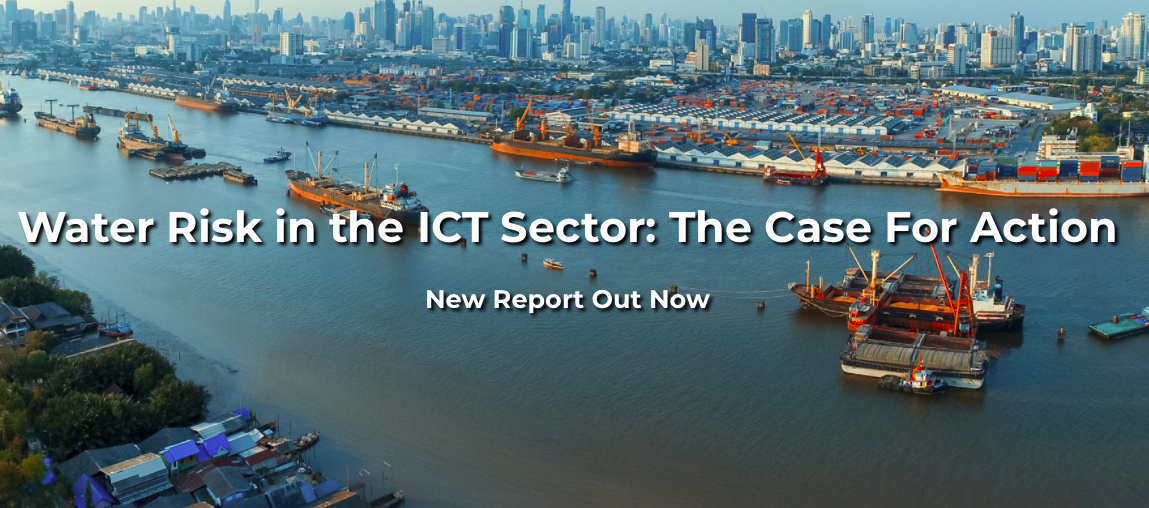
Eighty Percent of Information and Communication Technology (ICT) supply chain locations face high to very high levels of water risk due to flooding and 68 Percent face high to very high levels of risk due to water quality.
"Water Risk in the ICT Sector: The Case for Action". published on World Water Day by the Alliance for Water Stewardship (AWS) in collaboration with the Responsible Business Alliance (RBA) and WWF examines the water risks faced by the ICT sector, advocates for water stewardship in order to manage those risks and then sets out practical steps for collaboration within the ICT sector.
Writing on LinkedIn, Sarah Wade, strategic programmes manager at the AWS said: “Our findings highlight the significant risk that water poses to business continuity and supply chain resilience, but it also demonstrates that many of the risks are found in the supply chain, outside of the direct control of many brands.”
By running more than 3,000 ICT sector locations through the WWF Water Risk Filter tool, analysts identified that the Taihu, Dong and Zhu river basins in China are material to the ICT sector as the top three in the distribution of supply chain facilities there. Risky river basins elsewhere in the world included the Danube and Rhine in Europe, and the Colorado and Upper Mississippi in the US.
“In Asia, many business clusters are located downstream in major basins, and close to coastal regions,” says Wade, “meaning that the risk of flooding is significantly elevated".
She describes some findings on flooding risk as a surprise, saying: “Even the most advanced businesses tend to focus on scarcity and pollution within their stewardship actions, not flooding, but scarcity was only identified as a medium to high risk for 15 per cent of sites assessed.”
The report also points to brands’ exposure to reputational and financial risk if they are found to be linked to a supplier that is having a significant negative impact on the environment.
Arguing the case for water stewardship, the report points to opportunities for strategic collaboration within the highly connected ICT sector and calls for a common approach to accounting for and communicating water-related impacts and dependencies.
“Often, clusters are situated ‘downstream’ in the basin, leaving suppliers exposed to risk from the activities of other water users ‘upstream’, demonstrating the need for collaboration to solve shared water challenges,” says the report.
Download the full report HERE

Accounting For "Context" In Corporate Water Strategies
Rylan Dobson and Alexis Morgan of WWF write in a Guest Blog for The water Diplomat:
Take a moment to tell us about your corporate water strategy. No wait, let us guess: your water strategy involves a target to reduce water use and meet some pollution discharge targets, and perhaps some community efforts to support WASH or restore some nature?
That plan probably describes 80% of the corporate water strategies we come across. The good: it is promising to see more companies developing water-specific plans. The not-so-good: there are still very few water strategies that account for the local nature, or context, of water.
What do we mean by accounting for context when it comes to water strategies? Using water wisely is generally a good thing – we can all agree upon that. But does it make sense to spend a lot of money driving water use efficiency in a basin where water is abundant? Is that the best use of limited corporate funds to advance sustainability efforts? Will those efforts have a material benefit on the freshwater systems in that place? Maybe, but we would argue, probably not. Rather, companies need to focus their limited resources in the places, and on the topics, that will make the biggest difference. In other words, they need a contextual water strategy.
We are beginning to see some steps in the right direction. More and more companies are beginning to focus their water efforts on “water stressed basins”. While we would argue that there is a strong need to go “beyond water stress”, it is a promising start.
However, a contextual water strategy won’t go very far if we don’t link it to a broader corporate strategy. The water challenges that we collectively face won’t be solved by small incremental improvements by individual actors. Solving these challenges requires the repeated mobilisation of substantial collective resources, highly focused at a local scale. Corporations cannot be expected to carry the full burden of this response, but their contributions should be proportionate to the value which they derive from water. Corporations often struggle to establish a robust business case for investments into water and basins – meaning addressing water remains more of a CSR activity, aimed at mitigating select risks, rather than driving value.
By understanding how the local context of water materially impacts operational performance, it is easier for a corporation to better describe the strategic role that water plays in the achievement of broader corporate strategic objectives. Furthermore, understanding how water affects customer geographies paints new pictures about how water’s context can be mobilized for sales. Without this direct connection between local context and broader corporate objectives, it is unlikely that a corporation will be able to motivate for, and better allocate the use of, the scarce resources of a corporation, which are needed to both mitigate local water risks and capitalise on local water opportunities – both inside and outside the fenceline.
Since 2009, with the release of the Planetary Boundaries framework, there has been a growing global trend in corporate sustainability to embed “science” and situational context into corporate sustainability performance. To support our partners and other corporations establish more meaningful water strategies, WWF, together with our partner H&M Group, is publishing two linked guides. These guides aim to help corporates ensure their water strategies are (A) rooted in context and (B) linked to their overall corporate strategies. We also believe that contextual water strategies set the stage not just for more meaningful contextual water targets, but also (in the near future) science-based water targets.
The Guides:
The first guide “Putting Water Strategy Into Context” suggests a set of steps to help companies understand the strategic value of water within its value chain. It uses that platform to develop more meaningful actions and targets to ensure efficient allocation of scarce internal resources. The authors suggest that once established, the system would maximise the ability of corporations to create value beyond the corporate board room but for nature and people, as well.
The guide leans on systems already developed by the water stewardship community rather than propose any “new” terminology or frameworks. It aims to “motivate for broader internal uptake and investment in water stewardship”. The guide refers to existing frameworks and attempts to link these to larger corporate strategies.
The second guide “Contextual Water Targets”, focuses on setting larger and more stringent corporate water targets. It aims to incorporate both contextual and science-based targets and explains how the site-level targets can and do fit with corporate-level targets. The new guides contend that “corporate contextual targets need to both explicitly account for the local context of sites and contribute towards corporate strategic objectives.”
When taken together, the guides offer strategies that account for local water usage and context and align these targets with global sustainability best practice. They also enable corporations to establish more strategic goals and apply scarce internal resources more efficiently.
United States: Thousands Of Lives Could Have Been Saved By Nationwide Suspension Of Water Cutoffs During COVID Crisis
A nationwide US moratorium on water shutoffs could have saved more than 9,000 lives and prevented nearly half a million COVID infections in the US, according to a study by Cornell University in collaboration with advocacy NGO Food & Water Watch.
The study analysed infection and death rates across US states with varying policies on shutting off water supplies for non-payment of bills and found that a moratorium on water shutoffs was associated with a reduced daily infection growth rate by 0.235 percent, and daily death growth rate by 0.135 percent.
The authors argue: “These small reductions in the daily growth rates were significant and had a sizeable impact on the cumulative case and death numbers.” The study’s modelling also found that “comprehensive coverage of the moratorium was significantly associated with an even lower infection and death growth rate”.
A total of 41 states did not have full coverage of a moratorium during the period from 17 April to 31 December 2020.
The March 2021 report also points to the disproportionate exposure to the risk of water shutoffs among low-income populations as well as Black and Indigenous people of color and Latinx communities.
It calls on the Biden administration to “champion legislative solutions to cancel the water debt accrued during the pandemic and fully fund our public water infrastructure to provide long-term relief into the future”.
A lack of federal funding has placed a heavy financial burden on local ratepayers, with unaffordable water bills becoming a growing problem in many areas. “Federal funding for water and sewer systems fell by 77 Percent in real dollars from its peak in 1977 to 2017,” says the report, pointing out that the water infrastructure is aging and in need of replacement.
In a typical year, such as 2016, an estimated 15 million people experience water shutoffs for non-payment. Definitive figures on total shutoffs during the study period are not included in the report. However, it cites limited data from the New Jersey Board of Public Utilities, which says that around 100,000 people in the state were protected from losing their water because of state-issued moratoria, continuing: “California found that 1.6 million households (one in eight households) were behind on their water bills, owing more than $1 billion as of January 2021.”
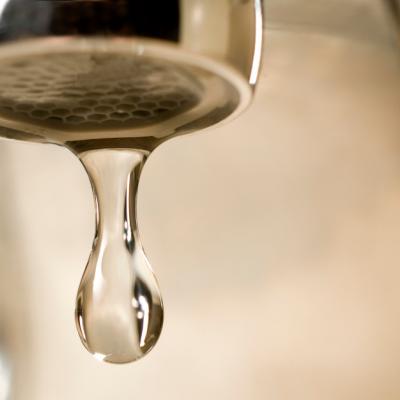
Canadian Trade Union Urges Pension Investor To Withdraw From Brazilian Water Deal
The Canadian Union of Public Employees (CUPE) has written to Canada Pension Plan Investments urging it to reconsider its involvement in a scheme to privatise one of Brazil's largest public water utilities Cedae, based in the state of Rio de Janeiro. The forthcoming auction is part of an ongoing selloff of public utilities by the government of Brazil's right-wing president Jair Bolsonaro.
“It’s outrageous that our public pension plan is using workers’ retirement funds to profit from people’s need for clean water and safe sewage treatment. These are human rights that are essential for survival. Access to water services is already fragile and unequal in Brazil. Privatization will make things worse and we want it scrapped,” said CUPE national president Mark Hancock.
In his letter, written on behalf of CUPE's 700,000 members, Hancock called on the CPPIB to "withdraw from this process immediately", arguing "it is well documented that water privatization often comes with skyrocketing rates, plummeting access, declining quality and cuts in service and jobs".
CPPIB's $220 Million USD stake in Igua is understood to strengthen Igua's bid for Cedae, according to a report in Reuters, as well as help fund another privatisation deal involving sanitation company Corsan.
Co-signatory to the letter, CUPE's national secretary-treasurer Charles Fleury, said: "“CUPE is strongly opposed to pension funds investing in, and profiting from, privatized infrastructure. We want our pension funds to make decent investment returns, but not at the expense of workers and the Canadian public, or workers and residents in other countries. The CPPIB must pull out of this harmful and risky privatization plan."
CUPE is also concerned that the deal is "inherently risky and damaging to your reputation", pointing out that a change of government following Brazil's 2022 general election presents "a very real possibility that public infrastructure sold off during the current government’s term could be brought back under public control...exposing investors to losses".
The National Federation of Urban Workers (FNU), which represents affected water workers in Rio de Janeiro, says the privatization will mean thousands of workers will lose their jobs. On April 26, several unions won a temporary injunction blocking the auction of Cedae, because the public water utility had not negotiated with the workers about the mass layoffs.
Photo credit: CUPE
Brumadinho Mine Disaster: Vale Agrees $7 Billion USD Reparation Settlement
Mining company Vale SA has reached agreement with the government of Minas Gerais in Brazil to pay $7 Billion USD to compensate the state for socioeconomic and environmental damage caused by the collapse of one of its trailings dams in January 2019 which killed 270 people, also polluting rivers with toxic slurry and devastating swathes of local countryside and infrastructure.
Further Water Diplomat coverage of the Brumadinho disaster
The sum, agreed 4 February, is in addition to compensation already paid and outstanding through individual claims and is separate from the ongoing criminal case against Vale, its inspection contractor TÜV Süd and 16 of the company’s executives.
According to the government of Minas Gerais, the settlement is the biggest in Brazil’s history. The state had originally lodged a claim for $10.3 Billion USD.
Ahead of the announcement, Brazilian advocacy group The Movement of Those Affected by Dams (MAB) denounced the manner in which the agreement was reached, arguing that the reparations agreed did not include representation of those directly affected by the disaster, the people of the Paraopeba river basin.
Media reports quote the governor of Minas Gerais, Romeu Zema, as saying that around 30 Percent of the $7 Billion USD will be invested in the city of Brumadinho.
According to a statement issued by Vale, the sum agreed includes “resources for the government of the state of Minas Gerais to carry out the urban mobility program and the public service strengthening program,” understood to refer to plans for building roads, hospitals and schools that will not directly benefit the communities of Brumadinho.
In the same statement, Vale’s CEO, Eduardo Bartolemeo, said: “Vale is committed to fully repair and compensate the damage caused by the tragedy in Brumadinho and to increasingly contribute to the improvement and development of the communities in which we operate. We trust that this Global Settlement is an important step in that direction. We know that we have work to do and we remain firm in that purpose, in line with our New Pact with Society.”
While investigations are still ongoing into the cause of the disaster, a panel of experts concluded in 2019 that the technical factors leading to the collapse of the dam included liquefaction of the solid materials that made up its structure.
Speaking to Reuters last year, federal prosecutor Edison Vitorelli claimed that 29 trailings dams used by Vale to store mining waste still present elevated safety risks. Six dams in particular have been identified as high risk.
Those charged with homicide and environmental crimes in the ongoing criminal case, including Vale’s former CEO Fabio Schvartsman, are accused of systematically hiding evidence of safety concerns, retaliating against auditing firms that flagged problems and that TÜV Süd was compensated for knowingly presenting Vale with misleading reports about dam stability.
Finance For Water Cooperation
Multimilion MCC Water Investment For Mongolia Capital
5 April 2021 marked the beginning of a 5-year timeline for the $350 Million USD Mongolia Water Compact which was launched by the Government of Mongolia in partnership with the Millennium Challenge Corporation (MCC), a foreign aid agency established by the US Congress in 2004.
The aim of the Mongolia Water Compact is to increase the clean water supply to Ulaanbaatar, Mongolia’s capital city, more than 80 Percent by 2026 and support the long-term sustainability of this water supply through infrastructure investments and supporting legal reforms and policies.
New infrastructure investments will go towards building two new plants – an Advanced Water Purification Plant and Wastewater Recycling Plan – and the construction of more groundwater wells across the city.
The Government of Mongolia will invest a further $111.8 Million USD to support the initiative – one of the largest investments that MCC has received from a partner country.
Since establishment in 2004, MCC has taken an evidence-based approach to provide a number of grants to developing countries, including Indonesia and Nepal, to support economic development, environmental sustainability and tackle poverty.
Acting Chief Executive Officer of MCC, Mahmoud Bah, said: “Access to water is a critical human need. In less than three decades, the population of Mongolia’s capital, Ulaanbaatar, has nearly tripled in size and the data indicates the city’s demand for water will soon exceed supply”.
“Enhancing water access in an environmentally sustainable way is critical to achieving poverty reduction and economic growth”, Bah added.
The compact must follow a strict 5-year schedule due to the substantially short construction season in Mongolia, which is unlike other Compact countries, according to E. Sodontogos, CEO of MCA-Mongolia.
Ms Sodontogos reassured, however, that this shorter timescale won’t hinder the quality of the project: “To ensure quality, contractors with both dedication and experience have to be selected to anticipate, mitigate, and manage...risks related with COVID-19 and others.”
“We are confident that we will overcome potential challenges and successfully implement the Mongolia Water Compact through joint effort and mutual understanding of our stakeholders, including the Government of Mongolia, the Capital City authority, the private sector, the academia and the general public".

Call For Aid As Somalia Faces Severe Drought
The Somali NGO Consortium (SNC) has issued an urgent call for aid as the country faces the risk of severe drought, with rainfall over the next three months forecast to be 70 Percent lower than normal in some areas.
“The time to prepare is now," said says Halimo Elmi Weheliye, Acting Director of the Somali NGO Consortium, continuing: "We know this from past drought responses and we are calling on all actors to be ready for an urgent scale up of humanitarian response to prevent unnecessary harm.”
Somalis are already struggling with crop failure due to a "disastrous" rainy season in October-December last year, further aggravated by a locust infestation and the continuing impacts of the COVID-19 pandemic.
"The worsening of the current drought conditions risks aggravating the situation for millions of Somalis trying to recover from the compounded effects [of] flooding, COVID-19, conflict, and locust invasions, all happening in 2020," explained Weheliye.
Quoting information from the Famine Early Warning Systems Network (FEWS), the SNC anticipates one in five Somalis (2.7 million people) will need humanitarian assistance without a scale up of emergency response. This represents a 69 percent increase from 1.6 million at the same date last year. The threat is particularly severe in the northern and central regions of this highly rain-dependent country.
More than 83,000 people have been displaced by water shortages since November 2020, and the SNC is warning that further displacement is likely as well as an increase in water-borne diseases.
"Worsening water shortages and pasture coupled with widespread COVID-19 crises and total collapse of Somali shilling due to inflation has led to severe humanitarian situation here in Puntland, causing livestock to die and pushing communities into suffering and malnutrition. If the rains don’t come, I don’t know how people and livestock will survive,” says Mohamoud Farah, Water and Sanitation Officer of aid and development NGO KAALO.
The SNC is calling on donors to provide additional funds and on humanitarian actors to "reprogram their current emergency responses to the worsening drought situation".
According to UNICEF, more than 50 Percent of people in Somalia do not have access to safe water, while over 30 percent walk more than 15 minutes to reach their main source of drinking water.
Photo credit: Giles Clarke/Getty Images
World Bank And Asian Infrastructure Investment Bank Support Punjab Drinking Water
The Punjab government has announced that the World Bank (WB) and the Asian Infrastructure Investment Bank (AIIB) have approved financing for two water treatment projects to meet the growing needs of the holy city of Amritsar and the industrial hub of Ludhiana.
The banks’ co-financing of $210 Million USD will be supplemented by government participation of up to $90 Million USD. Each project consists of construction of water treatment facilities and supply reservoirs at the main source of drinking water for the respective city.
Currently, the cities are sourcing poor quality drinking water through tube wells that have been over-exploited. The projects will replace the tube wells with water treatment facilities for surface water and reservoir storage in order to offer a continuous supply.
The projects have been designed to meet the water demand for 30 years and meet the needs of each city’s growing population. It is estimated that Amritsar’s population will increase from the current 14.5 million to approximately 22 million in 2055. Likewise, Ludhiana is expected to expand from a current 21 million to almost 30 million by 2055.

EIB Lends $35.7 Million USD To Malawi For Water Infrastructure
Malawi's Southern Region Water Board (SRWB) has secured a $35.7 Million USD loan from the European Investment Bank (EIB) to help upgrade inadequate water systems in the southern districts of Balaka and Machinga, according to local media reports. The soft loan has a repayment term of 20 years with a five-year grace period.
The SRWB says the projects to be financed by the loan will supply around 150,000 people with drinking water until 2050. Work is expected to commence in March 2022 for completion by August 2023.
Acting CEO of SRWB, Duncan Chambamba, is quoted in the Nyasa Times saying: "The situation has been so pathetic, especially in Liwonde, where residents almost held demonstrations against the board for its failure to supply water for both domestic and commercial customers," adding, "In most cases, residents experience dry taps for the better part of the day, despite our efforts to pump water into our reservoirs or tanks."
Chambamba explained that the projects will focus on increasing water pumping capacity in line with the ever-growing population in the two districts, which is expected to increase tenfold by 2050.
While the SRWB has not revealed the specific nature of the projects, Malawi's finance minister, Felix Mlusu, told Nyasa Times: "The loan is very crucial as it will allow the board to carry out these huge projects, which will enable people [to] access safe and potable water," adding that some of the funds will be used to establish a power plant that will allow the SRWB to diversify its operations and increase revenue.
The latest loan from the EIB follows one of €20.5 million to Malawi's Northern Regional Water Board (NRWB) in 2017.
According to NGO WaterAid, one in three Malawians (5.8 million) doesn't have access to clean water and more than 3,100 children die every year in Malawi as a result of dirty water and poor sanitation. One of the smallest and least developed African nations, Malawi has been prioritising clean water and sanitation for the last 20 years.
Photo credit: UNICEF
New Mechanisms For Hydrodiplomacy
Malaysian States In Water Stand-off
Neighbouring Malaysian states of Penang and Kedah are embroiled in a dispute over rights to water from the Sungai Muda River.
The upstream state of Kedah is demanding that its downstream neighbour Penang, a highly industrialised engine of the Malaysian economy, pay for raw water from the river, and has also announced plans for a water retention plan that could potentially “throttle” flows to Penang.
The first minister of Kedah, Muhammad Sanusi Md Nor insists the planned riverside water catchment system known as TAPS is intended to stabilise the river’s water level during the dry season and ensure water supplies for the people of Kedah, according to local media reports. Kedah, often referred to as Malaysia’s “rice bowl”, is highly dependent upon agriculture.
Speaking to local media outlets, Sanusi said that Kedah’s planned TAPS system involves 14 riverside retention tanks, each one 20 to 30 metres deep and up to one kilometre wide.
Penang’s first minister Chow Kon Yeow has called for Malaysia’s federal government to intervene, and is threatening legal action against Kedah in the event that Penang’s water supply is threatened. In light of the development, Chow also said that the government is looking into alternative water technologies “to mitigate the risks of potential 'mishaps' involving Sungai Muda that may affect water supply services in Penang”, Chow said in a statement, warning that this may incur higher water supply costs and tariffs in the future.
About 80 Percent of Penang’s water comes from the part of the river that flows through Penang.
Meanwhile, a coalition of 13 NGOs urged this month that the two sides seek mediation to resolve the issue and come together to protect the Greater Ulu Muda forest in Kedah, which is the water catchment system for the Sungai Muda. In an open letter to the squabbling parties, the coalition said the forest is under serious threat from land clearing, logging and mining.
“While Penang may have the legal rights to extract raw water from its side of Sungai Muda, it is to its long-term benefit to help Kedah to protect the Greater Ulu Muda forest,” said the letter.
Despite being the second smallest of Malaysia’s 13 states by land mass, Penang has the country’s third-highest GDP per capita, 90% of which is driven by manufacturing and service sectors, according to information published in 2020 by the Penang Institute. Kedah’s GDP per capita, on the other hand, is the second-lowest in the country and less than half that of Penang.
